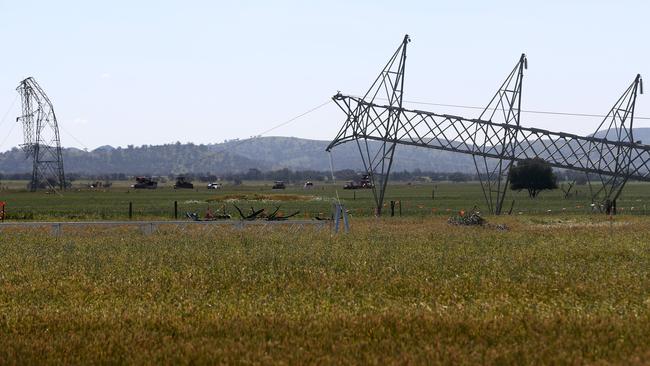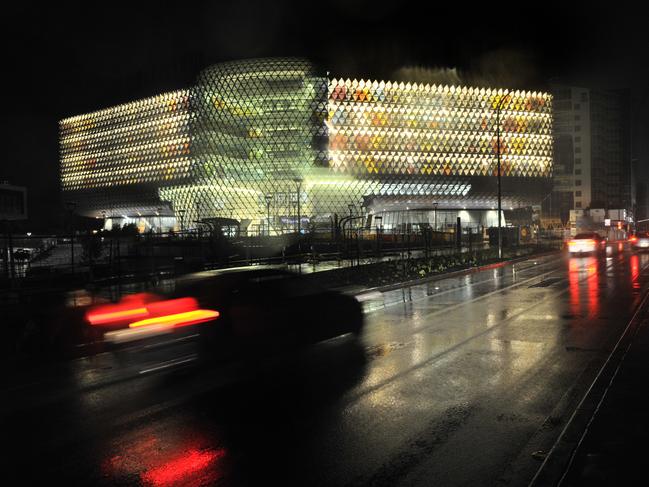The role of wind farms in the 2016 South Australian statewide blackout
Today’s court action against wind farms may strengthen accusations wind power was to blame for the 2016 statewide blackout — but don’t be fooled. It’s not as simple as that, writes Paul Starick.
- SA wind farms taken to court over 2016 blackout
- What happened after the SA statewide blackout
- Entire state in blackout: How we reported the unfolding saga
- FIRST REPORT: Multiple faults led to SA blackout
- SECOND REPORT: Why SA wind farms didn’t ride the storms
- FINAL REPORT: How South Australian blackout happened
Wind farms alone did not cause the 2016 statewide blackout but the failure of their crucial control systems almost certainly did.
Four South Australian wind farm operators have been taken to court over the blackout, with the Australian Energy Regulator alleging they did not ensure the plants complied with performance requirements to withstand major weather disturbances.
It also will be alleged they failed to provide automatic protection systems that would have enabled the plants to “ride through voltage disturbances” and ensure continued supply.
The action confirms key aspects of the political case made against renewable energy in the statewide blackout’s aftermath but, crucially, it does not fatally condemn wind power.
The important distinction is that this was, as the Australian Energy Market Operator’s official report into the blackout said, the failure of wind turbine control settings responding to multiple disturbances that led to the statewide blackout.

It was not the systemic failure of wind power, as some shrill critics suggested after the blackout.
Yet again, this court action highlights the risk to householders and businesses of being at the cutting edge of renewable energy development.
South Australia has been either a world-leader in embracing wind and solar energy or rushed headlong into a foolish experiment that has imperilled grid security and triggered skyrocketing power prices.
Neither viewpoint is entirely correct, yet the pioneering nature of SA’s renewable energy embrace did leave the state dangerously exposed on September 28, 2016.
Essentially, the wind farm control settings’ failure was a critical link in a series of cascading events that caused the blackout. If they had not failed, it is more than arguable the lights would have remained on across the state.
As AEMO’s final report published in March, 2017, found, tornadoes with wind speeds between 190-260km/h struck parts of the state. Two of these, almost simultaneously, damaged three Mid North high-voltage transmission lines, causing them to trip.
A reduction in power output from nine Mid North wind farms caused a major increase in power flowing from Victoria through the interconnector, causing that to trip. Remaining generation was much less than the connected load, so all supply was lost.

The day after the blackout, then-premier Jay Weatherill sheeted home the blame to the severe storms, a deft position he subsequently maintained, despite several inconsistencies.
Mr Weatherill said on September 29: “ The head of the Australian Energy Market Operator told me that any system would not be able to cope with a weather system of this kind. We had winds which were so strong that when they hit power lines they created such energy they were tearing the towers out of the ground. We had 80,000 lightning strikes, some of which hit our generators. All of these combined to bring the system down.”
But the Australian Energy Market Operator’s final report, released on March 28, 2017, found: “Wind turbines successfully rode through grid disturbances. It was the action of a control setting responding to multiple disturbances that led to the Black System (statewide blackout). “Changes made to turbine control settings shortly after the event has removed the risk of recurrence given the same number of disturbances.
“Had the generation deficit not occurred, AEMO’s modelling indicates SA would have remained connected to Victoria and the Black System would have been avoided. AEMO cannot rule out the possibility that later events could have caused a black system, but is not aware of any system damage that would have done this.”
Renewable energy, somewhat unfairly, became a lightning rod for blame after the blackout, fuelled by both sides in the continuing climate war twisting the facts to suit their arguments.
This was intensified by internal critics of the-then prime minister Malcolm Turnbull sensing another opportunity to strike at his muddled energy policy.
The court action builds on the market operator’s findings and, hopefully, will contribute to strengthening electricity grid security and, therefore, bringing down power prices.

